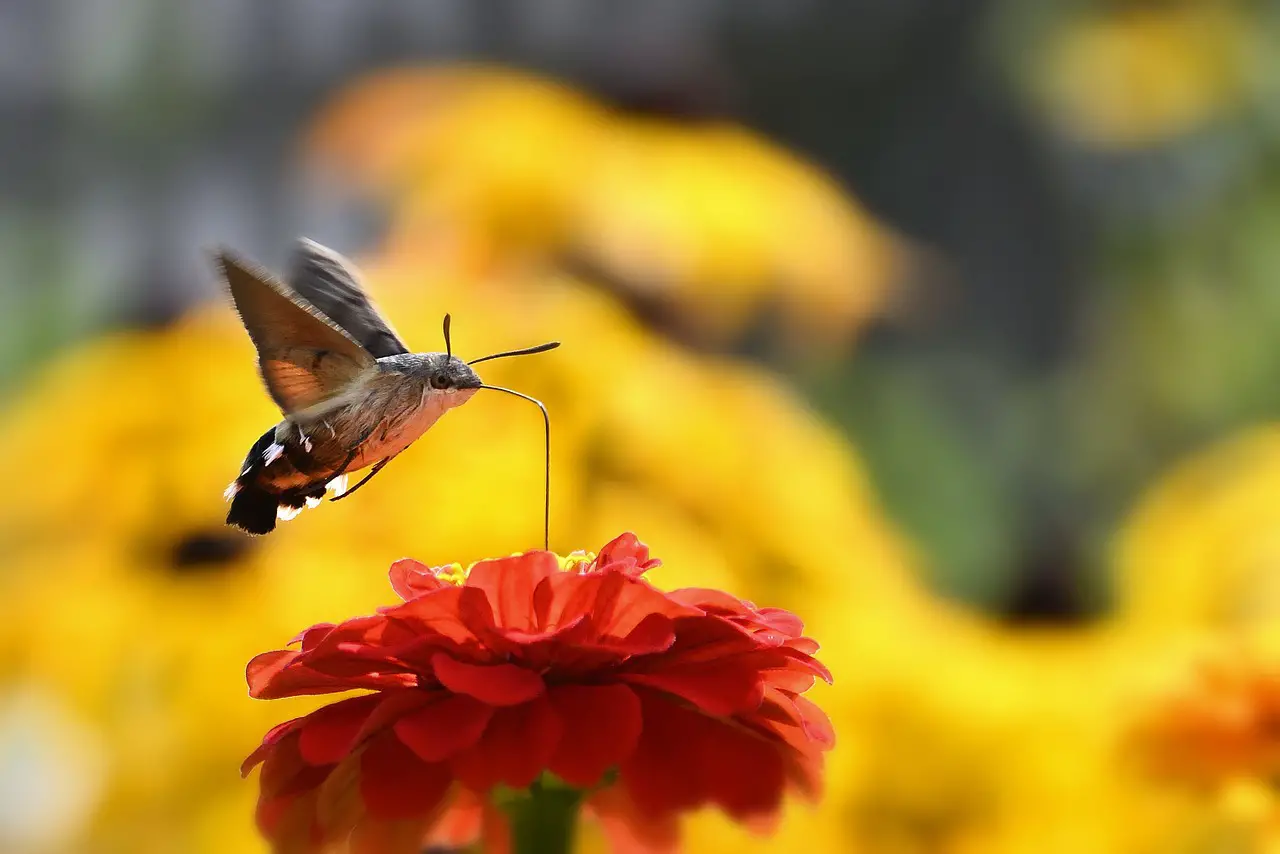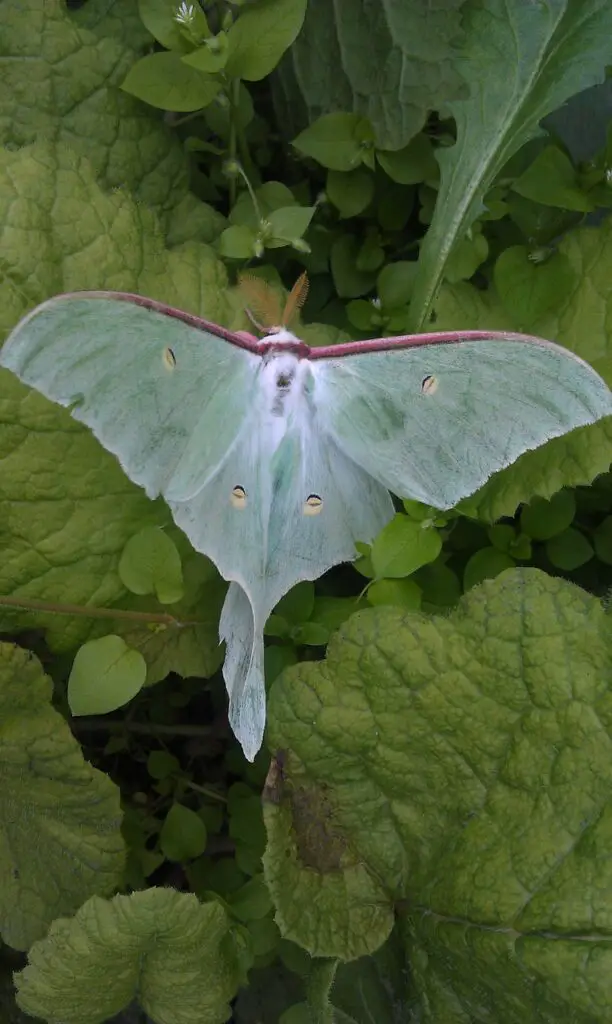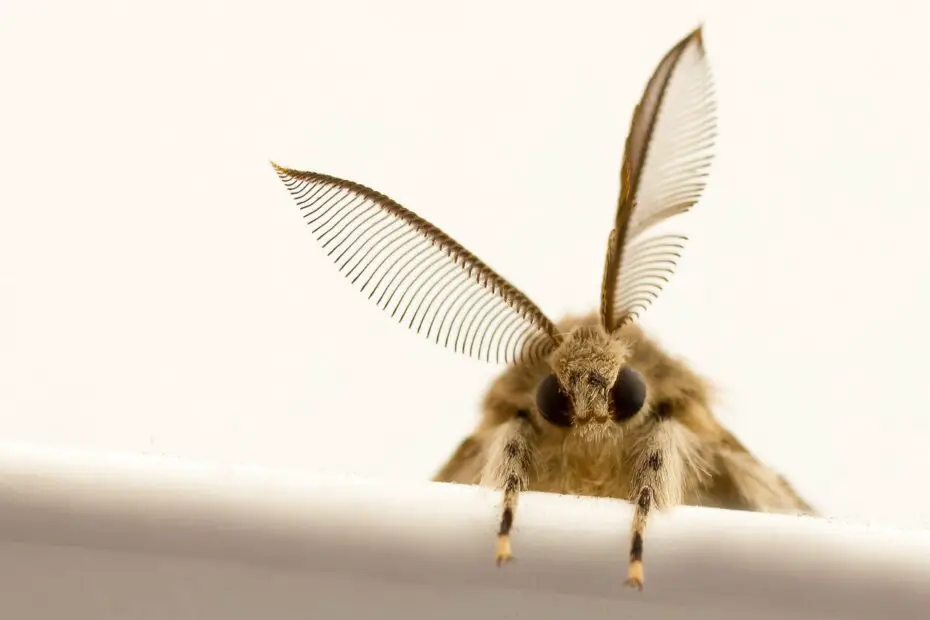What Do Moths Eat? Moths, those fascinating nocturnal insects that flutter around our outdoor lights and sometimes find their way into our homes, have long captured our curiosity. They are a diverse group of insects with over 160,000 known species, each with its own unique characteristics and behaviors.
One aspect of their lives that intrigues us is their diet and feeding habits. In this article, we will explore what moths eat, delving into their dietary preferences and shedding light on their crucial ecological roles.
You may also want to know what coyotes eat.
Understanding Moths
Physical Characteristics
Before we dive into their diets, let’s take a moment to understand moths themselves. Moths belong to the order Lepidoptera, just like butterflies. They are distinguishable from butterflies by their generally thicker bodies, feathery or filamentous antennae, and their nocturnal nature. Moths come in various shapes, sizes, and colors, and their adaptations are tailored to their specific environments.

Life Cycle and Behavior
Like butterflies, moths undergo a complete metamorphosis, starting as eggs laid by female moths. The eggs hatch into caterpillars, also known as larvae, which feed voraciously to fuel their growth. After a period of feeding, caterpillars form a cocoon or pupa, where they undergo a transformative process called pupation. Finally, adult moths emerge from the pupa, ready to continue their life cycle.
Moth Diets and Feeding Habits
What Do Moths Eat? Moths have diverse diets depending on their life stage. Let’s explore the dietary preferences of both adult moths and their caterpillar counterparts.
Adult Moth Diets
As adult moths, their primary focus is on reproduction. Most moth species rely on nectar as their main source of sustenance. They have specialized mouthparts called proboscis, which allow them to access the sweet nectar hidden within flowers. By sipping nectar, moths obtain the energy they need to survive and mate. In the process, they unintentionally assist in pollination, playing a vital role in ecosystem functioning.
Caterpillar Feeding Habits
Caterpillars, the larval stage of moths, exhibit diverse feeding habits. Some caterpillars are generalists, consuming a wide range of plant materials, while others are more specialized and feed exclusively on specific plant species. Caterpillars are typically herbivorous, with a strong preference for leaves. They use their powerful jaws to chew and consume plant matter, sometimes causing visible damage to foliage.
Types of Food Moths Consume
Moths exhibit a wide range of food preferences, adapting to various ecological niches. Let’s explore some common food sources for moths.
Nectar and Pollen
As mentioned earlier, many adult moths feed on nectar, making them important pollinators. They visit flowers during the night, transferring pollen from one flower to another as they seek nourishment. This mutualistic relationship between moths and flowering plants contributes to the diversity and resilience of plant communities.

Sap and Rotting Fruits
Some moth species have adapted to feed on sap oozing from trees or rotting fruits. They are equipped with mouthparts that can pierce the surface of fruits or tap into sap flows. This feeding behavior provides moths with additional nutrients and energy sources.
Leaves and Plant Matter
Caterpillars, being voracious eaters, primarily consume leaves and various plant parts. They can defoliate entire plants if their populations are large. While this might concern gardeners, it’s important to remember that moths play crucial roles in natural ecosystems, providing food for other organisms and participating in nutrient cycling.
Moth-Mimicking Species
Interestingly, some non-moth species have evolved to mimic the appearance of moths. This adaptation serves as a defense mechanism, deterring potential predators by capitalizing on the negative experiences associated with moths. These mimicking species may gain protection from their moth-like appearance, even though they might have different diets and lifestyles.
Importance of Moths in Ecosystems
Moths, despite their often-underappreciated status, hold significant ecological importance. They serve as pollinators for numerous plant species, aiding in the reproduction and genetic diversity of flowering plants. Additionally, moths form a crucial link in the food chain, serving as a food source for various predators, including birds, bats, and insects. Their feeding habits and interactions with other organisms contribute to the overall balance and stability of ecosystems.
Conclusion
What Do Moths Eat? Moths are enigmatic creatures, playing essential roles in our natural world. Understanding their dietary preferences and feeding habits helps us appreciate their ecological significance. From nectar-sipping adults to leaf-munching caterpillars, moths showcase a remarkable diversity in their diets. So, the next time you spot a moth fluttering by, remember the vital role it plays in pollination, nutrient cycling, and sustaining biodiversity.
FAQs
1. Do all moths feed on nectar? No, while many adult moths rely on nectar as their primary food source, there are exceptions. Some species feed on sap, rotting fruits, or other nutrient-rich substances.
2. Are caterpillars of moths harmful to plants? Caterpillars can cause visible damage to plant foliage, especially when their populations are high. However, it’s important to remember that moths play important roles in ecosystems, and their feeding activities contribute to overall biodiversity.
3. Can moths be pollinators? Yes, moths are important pollinators for numerous plant species. Their visits to flowers aid in the transfer of pollen, contributing to plant reproduction and genetic diversity.
4. Are there any moth species that mimic moths? Yes, some non-moth species have evolved to mimic the appearance of moths as a defense mechanism against predators. This adaptation provides protection by association with the negative experiences associated with moths.
5. How do moths contribute to ecosystems? Moths play crucial roles in ecosystems as pollinators, food sources for other organisms, and participants in nutrient cycling. They contribute to the balance and stability of natural communities.
